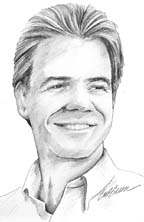 |
It is an exciting idea, to have technical analysis taught at the university level. And what I really find interesting, and wholeheartily support, is the emphasis that the course curriculum places on the Wyckoff method -- the classic, pioneering work authored by Richard D. Wyckoff, more than 60 years ago! Longtime S&C readers know that we published a series of articles on the Wyckoff method, as well as some of Wyckoff's original work. And though I run the risk of being accused of self-promotion, we offer that article series in book form in Charting the Stock Market: The Wyckoff Method.
Now that I've taken care of that, let me add that I studied these methods long before I came to work at Technical Analysis, Inc. The techniques really struck a chord in me, because they provided a means of describing the price action on a chart in a way that seemed intuitive. Wyckoff's interpretation accounted for the day-to-day movements of markets in ways that I never could have verbalized but made perfect sense, based on my own experience.
The fascinating thing about Wyckoff's work is it used the concept that a "composite operator" -- the smart money of Wyckoff's day -- manipulate the market by marking prices up, then setting the tops, followed by marking prices down, then making a bottom. His work was based on what he saw as the designs of the pool operators of his day. But the patterns he described are still applicable in today's markets. How is this possible?
One of the tenets to Wyckoff's work is that his approach uses a combination of price and volume, which he in turn presents conceptually in the form of demand and supply. While a full discussion is beyond our scope here, we have included within the interview two sidebars from our book, Charting the Stock Market: The Wyckoff Method, to give you a feel for his work. His techniques are insightful, and even more important, they helped my own profitability.
Of course, there is no Holy Grail, and in fact, today my own trading is momentum-based because that approach is easy to quantify, which is of paramount importance to me. That's the only drawback to Wyckoff: Some of his methods are difficult to define exactly. And because I only use techniques that I can test -- which means I use precise rules -- I've shifted my work to just price. I will say, though, that if you have an interest in charting and want to see how one of the best looked at the markets, you should study Wyckoff. Once you have an understanding of the Wyckoff method, you'll find it's a little like discovering a heretofore unrealized truth; afterward, you'll never stop seeing the patterns. And who knows? Maybe for you it'll be that edge we all look for.